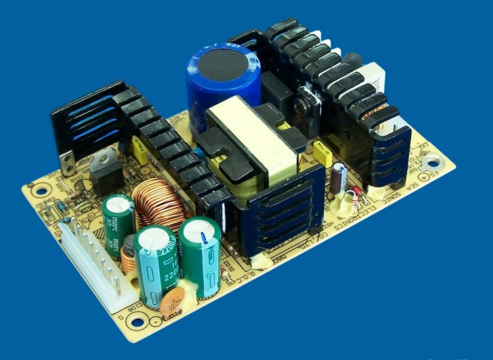How to design power supply electromagnetic compatibility?
Electromagnetic compatibility refers to the anti-interference ability of a lossy signal from the outside and the suppression of its own electromagnetic interference. The electromagnetic interference generates electromagnetic energy from the interference source and is transmitted to the electronic device through some transmission route, and the electronic device responds thereto produce interference effects. With the rapid development of the electronics industry, the impact of the electromagnetic environment on the surrounding area is becoming more and more serious, which often affects the performance of power supplies and electronic equipment, and seriously damages the equipment or even fails to work properly.
The wide application of electronic equipment makes electronic systems more and more complicated. Because electronic systems are sensitive to electromagnetic interference, it is important to design electromagnetic compatibility of electronic equipment in order to operate in such a complicated electromagnetic environment for a long time. Power supplies, electronic products should have the ability to resist external interference and inhibit the ability to generate electromagnetic interference.

There are four common electromagnetic interferences:
1, self-compatibility
The digital part or circuit of the system can affect the analog device, causing string burns between the wires, which can cause digital circuit disturbances.
2, power interference
When the power mains are continuously connected to more and more electronic products, the system will have potential interference. Interference phenomena include power line interference, power line harmonics, voltage, surge, and electrical fast transients.
3, radio frequency interference
Radio frequency interference refers to the increase of radio transmitters, such as cellular phones, handheld radios, radio remote controls, etc., and the transmitted radio frequencies cause interference to electronic systems. A typical fault is an RF strength of 1 to 10/m.
4, electrostatic discharge
There are two ways of electrostatic discharge: direct contact and radiation. Direct contact generally causes permanent damage to the device. Radiation may cause the device to malfunction. With the development of chip technology, the integration degree is getting higher and higher, and the transistor microprocessor is easily damaged by external static electricity.
PCB causes electromagnetic interference:
1. The packaging measures are not appropriate. The packaging materials are metal and plastic.
2, PCB design is not good, such as poor grounding of cables and connectors.
3, improper PCB layout, such as clock routing, layered arrangement, signal wiring, etc. improper settings, high frequency RF distribution is improper, common touch, poor touch filter is insufficient, ground loop causes RF and ground bounce, decoupling, side The road is not enough.
For high-frequency PCB design, to achieve EMC standards, grounding control, transmission line control, bypass decoupling, and wiring terminal matching are generally used.
Electromagnetic compatibility shielding design:
1. For high frequency electromagnetic waves, metal shielding materials are generally used.
2. The way to solve the electromagnetic leakage of the chassis gap is to use an electromagnetic sealing gasket at the gap.
3. For low frequency electromagnetic interference, magnetic materials with high magnetic permeability (such as nickel-copper alloy) are generally used.
Low-frequency electromagnetic waves are mostly in the form of conduction (<10Mhz), and high-frequency electromagnetic waves are mostly in the form of radiation. The design can be shielded with a new material such as single-layer solid shielding material, multi-layer solid shielding material, double shielding, and multiple shielding.
Power supply electromagnetic compatibility design:
In order to save energy and provide work efficiency, the market generally uses switching power supply, and the switching power supply circuit and the clock circuit in the digital circuit are the most important electromagnetic interference sources of current electronic products.
The electromagnetic compatibility design of the power supply should firstly suppress the interference source, prevent electromagnetic interference, and then adopt anti-electromagnetic interference measures to block the interference propagation, and then reduce the sensitivity of the electronic device to interference.
For electronic components, filters, grounding and bypass, printed board layout, signal layout, cable connectors, interference suppression wiring, etc., isolation, filtering, decoupling, sealing, grounding, shielding, circuit impedance are generally used. Anti-electromagnetic interference measures such as control and reasonable wiring.
If you want to know more, our website has product specifications for the power supply, you can go to ALLICDATA ELECTRONICS LIMITED to get more information

